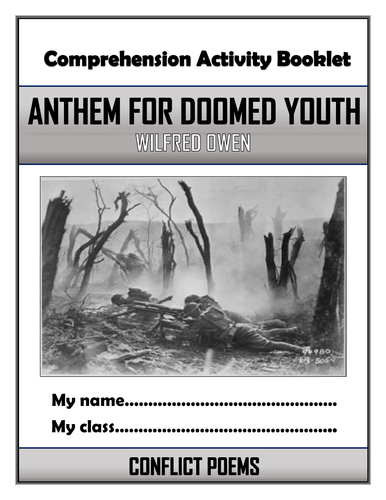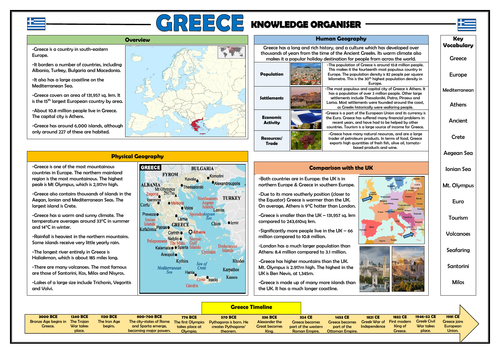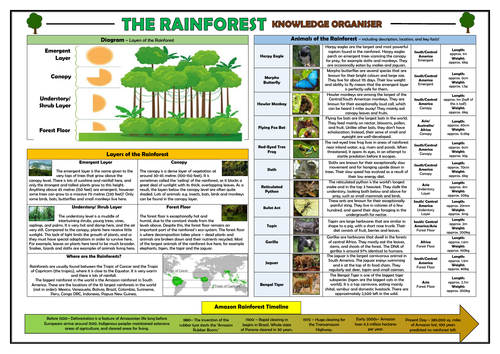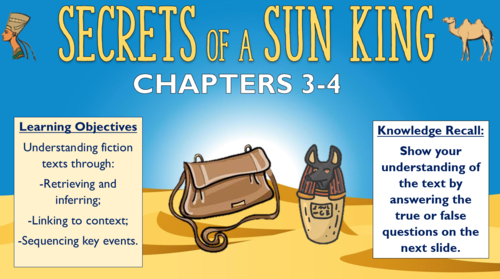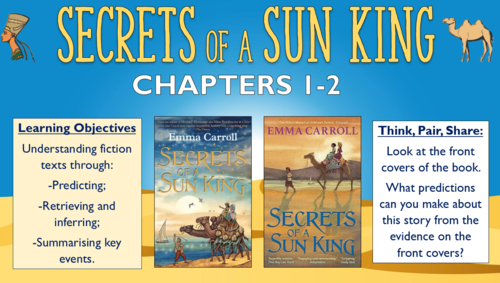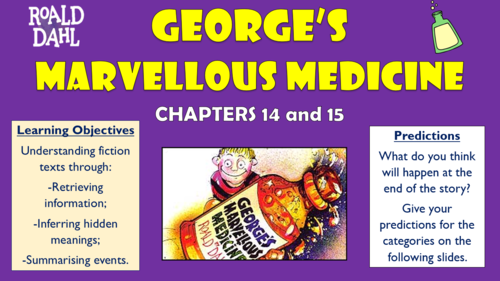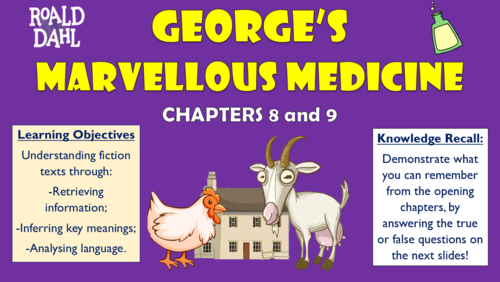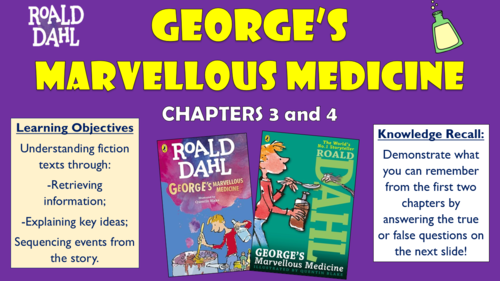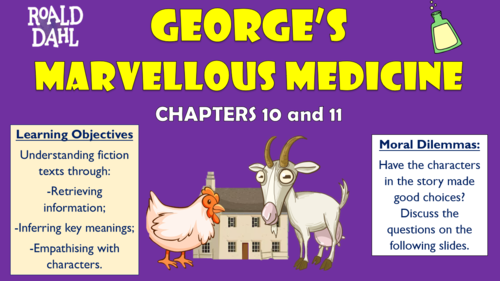
3k+Uploads
2031k+Views
2338k+Downloads
All resources

Anthem for Doomed Youth Comprehension Activities Booklet!
This 16-page resource booklet contains a wide range of challenging and engaging comprehension activities for use throughout the reading of Wilfred Owen’s power and conflict poem 'Anthem for Doomed Youth.’ Teachers have found them particularly useful throughout teaching, or for exam revision or guided reading sessions. They are perfect for aiding the progress of students towards meeting the key English Literature assessment objectives - suitable for all examining bodies. Students have found these resources extremely engaging, and it is clearly highlighted within each task regarding which assessment strands the task is designed to demonstrate.
It is provided in both Word (to allow for easy editing) and PDF (to ensure for consistency of formatting between computers).
Activities within the booklet include (amongst many others):
‘Analysing Context’ - helping students to ‘Show understanding of the relationships between texts and the contexts in which they were written.’
‘Analysing Subject Matter, Language and Structure’ - to help students to ‘Analyse the language, form and structure used by a writer to create meanings and effects, using relevant subject terminology where appropriate.’
‘Diary Entry’ - to help students to ‘Use a range of vocabulary and sentence structures for clarity, purpose and effect, with accurate spelling and punctuation. Make an informed personal response, recognising that other responses to a text are possible and evaluating these.’
‘The Speaker’ - to help students to ‘Read, understand and respond to texts. Students should be able to: maintain a critical style and develop an informed personal response use textual references, including quotations, to support and illustrate interpretations.’

Greece Knowledge Organiser - KS2 Geography Place Knowledge!
This clear, detailed and visually-appealing resource offers a complete reference point for students revising knowledge relating to Greece, as a part of their study of place, human and physical geography. It contains comprehensive sections on:
Overview and Maps;
Physical Geography;
Human Geography;
Comparison with the United Kingdom;
Greece Timeline;
Key Vocabulary.
The organiser is designed to help children to learn the relevant place, human and physical geography knowledge from the KS2 Geography National Curriculum: -‘understand geographical similarities and differences through the study of human and physical geography of a region of the United Kingdom and a region in a European country’
-‘physical geography, including: climate zones, rivers, mountains, volcanoes and earthquakes’
-‘human geography, including: types of settlement and land use, economic activity
including trade links, and the distribution of natural resources including energy.’
The resource is designed to be printed onto A3, and is provided as both a PDF and a Word version (so that you can edit if you want to). All images used are licensed for commercial use and are cited on a separate document (included).

Rainforests KS2 Knowledge Organiser!
This clear, detailed and visually-appealing resource offers a complete reference point for students learning or revising knowledge relating to rainforests. It contains comprehensive sections on:
The different layers of the rainforest (emergent, canopy, understory/shrub, forest floor) and diagram;
Information about where rainforests can be found in the world;
Animals of the rainforest (including distribution, images, habitat, size/weight, and key facts);
Timeline of deforestation;
The resource is designed to be printed onto A3, and is provided as both a PDF and a Word version (so that you can edit if you want to). All images used are licensed for commercial use and are cited on a separate document (included). The resource is most suitable for students in KS2 or KS3.

Dulce et Decorum Est - Wilfred Owen - Comprehension Activities Booklet!
This 16-page resource booklet contains a wide range of challenging and engaging comprehension activities for use throughout the reading of Wilfred Owen’s World War I poem ‘Dulce et Decorum Est.’ Teachers have found the activities particularly useful throughout teaching, or for exam revision or guided reading sessions. They are perfect for aiding the progress of students towards meeting the key English Literature assessment objectives - suitable for all examining bodies. Students have found these resources extremely engaging, and it is clearly highlighted within each task regarding which assessment strands the task is designed to demonstrate.
It is provided in both Word (to allow for easy editing) and PDF (to ensure for consistency of formatting between computers).
Activities within the booklet include (amongst many others):
‘Analysing Context’ - helping students to ‘Show understanding of the relationships between texts and the contexts in which they were written.’
‘Analysing Subject Matter, Language and Structure’ - to help students to ‘Analyse the language, form and structure used by a writer to create meanings and effects, using relevant subject terminology where appropriate.’
‘Diary Entry’ - to help students to ‘Use a range of vocabulary and sentence structures for clarity, purpose and effect, with accurate spelling and punctuation. Make an informed personal response, recognising that other responses to a text are possible and evaluating these.’
‘The Speaker’ - to help students to ‘Read, understand and respond to texts. Students should be able to: maintain a critical style and develop an informed personal response use textual references, including quotations, to support and illustrate interpretations.’

Locational Knowledge - United Kingdom - Knowledge Organiser!
This clear, detailed and visually-appealing resource offers a complete reference point for students revising knowledge relating to the United Kingdom, as a part of locational knowledge in geography. It contains comprehensive sections on:
Overview and map;
Counties and Cities of the UK;
Longest Rivers;
Highest Mountains;
Human Geography Features;
Physical Geography Features.
The resource is designed to be printed onto A3, and is provided as both a PDF and a Word version (so that you can edit if you want to). All images used are licensed for commercial use and are cited on a separate document (included). The resource is most suitable for students in KS2 or lower KS3.

Secrets of a Sun King - Chapters 3 and 4 - Double Lesson!
This engaging and thought-provoking double-lesson resource aids students in developing a secure understanding of the chapters 3 to 4 of Emma Carroll’s 'Secrets of a Sun King.’ In this section of the text, Lil meets Tulip and Oz for the first time, and visits her Grandad in the hospital, where she learns of the curse.
The comprehensive and colourful PowerPoint presentation enables students to understand the text through:
-Retrieving information;
-Inferring and deducing hidden meanings;
-Linking ideas from the text to context;
-Sequencing the key events of the chapters.
The sessions include a range of retrieval, vocabulary, inference, explanation and deeper thinking activities. A clear, colourful and comprehensive PowerPoint presentation guides students through the learning.
There’s a lot in the session (20 slides in total) so I would recommend breaking into two lessons. The lessons are most suitable for children in key stage 2, (they were originally used for those in years 4 and 5).

Secrets of a Sun King - Chapters 1 and 2 - Double Lesson!
This engaging and thought-provoking double-lesson resource aids students in developing a secure understanding of the chapters 1 to 2 of Emma Carroll’s 'Secrets of a Sun King.’ In this section of the text, Lil’s grandfather is taken to hospital, and she is both mystified and captivated after opening the package containing the ancient Egyptian jar.
The comprehensive and colourful PowerPoint presentation enables students to understand the text through:
-Making predictions;
-Retrieving information;
-Inferring and deducing hidden meanings;
-Summarising the key events of the chapters.
The sessions include a range of retrieval, vocabulary, inference, explanation and deeper thinking activities. A clear, colourful and comprehensive PowerPoint presentation guides students through the learning.
There’s a lot in the session (20 slides in total) so I would recommend breaking into two lessons. The lessons are most suitable for children in key stage 2, (they were originally used for those in years 4 and 5).

George's Marvellous Medicine - Chapters 12 and 13 - Double Lesson!
This engaging and thought-provoking double-lesson resource aids students in developing a secure understanding of chapters 12 and 13 of Roald Dahl’s ‘George’s Marvellous Medicine.’ The chapters covered in these lessons are ‘Marvellous Medicine Number Two’ and ‘Marvellous Medicine Number 3.’
The lessons are guided by a comprehensive and colourful PowerPoint presentation, and enables students to understand the text through:
-Retrieving information;
-Inferring hidden meanings;
-Making predictions.
The sessions include a range of retrieval, vocabulary, inference, explanation and deeper thinking activities. A clear, colourful and comprehensive PowerPoint presentation guides students through the learning.
There’s a lot in the session (17 slides in total) so I would recommend breaking into two lessons. The lessons are most suitable for children in upper key stage 1 or lower key stage 2, (they have been used in the past with children in years 2 and 3) but they could also be adapted for slightly older and younger year groups.

George's Marvellous Medicine - Chapters 14 and 15 - Double Lesson!
This engaging and thought-provoking double-lesson resource aids students in developing a secure understanding of chapters 14 and 15 of Roald Dahl’s ‘George’s Marvellous Medicine.’ The chapters covered in these lessons are ‘Marvellous Medicine Number Four’ and ‘Goodbye Grandma.’
The lessons are guided by a comprehensive and colourful PowerPoint presentation, and enables students to understand the text through:
-Retrieving information;
-Inferring hidden meanings;
-Summarising events.
The sessions include a range of retrieval, vocabulary, inference, explanation and deeper thinking activities. A clear, colourful and comprehensive PowerPoint presentation guides students through the learning. A storyboard template is also provided for the creative activity (in both Word and PDF).
There’s a lot in the session (18 slides in total) so I would recommend breaking into two lessons. The lessons are most suitable for children in upper key stage 1 or lower key stage 2, (they have been used in the past with children in years 2 and 3) but they could also be adapted for slightly older and younger year groups.

George's Marvellous Medicine - Chapters 8 and 9 - Double Lesson!
This engaging and thought-provoking double-lesson resource aids students in developing a secure understanding of chapters 8 and 9 of Roald Dahl’s ‘George’s Marvellous Medicine.’ The chapters covered in these lessons are ‘The Brown Hen’ and ‘'The Pig, the Bullocks, the Sheep, the Pony and the Nanny-goat.’
The lessons are guided by a comprehensive and colourful PowerPoint presentation, and enables students to understand the text through:
-Retrieving information;
-Inferring hidden meanings;
-Analysing language.
The sessions include a range of retrieval, vocabulary, inference, explanation and deeper thinking activities. A clear, colourful and comprehensive PowerPoint presentation guides students through the learning.
There’s a lot in the session (19 slides in total) so I would recommend breaking into two lessons. The lessons are most suitable for children in upper key stage 1 or lower key stage 2, (they have been used in the past with children in years 2 and 3) but they could also be adapted for slightly older and younger year groups.

George's Marvellous Medicine - Chapters 3 and 4 - Double Lesson!
This engaging and thought-provoking double-lesson resource aids students in developing a secure understanding of the chapters 3 to 4 of Roald Dahl’s ‘George’s Marvellous Medicine.’ The chapters covered in these lessons are ‘George Begins to Make the Medicine’ and ‘Animal Pills.’
The lessons are guided by a comprehensive and colourful PowerPoint presentation, and enables students to understand the text through:
-Retrieving information;
-Explaining key meanings;
-Sequencing events.
The sessions include a range of retrieval, vocabulary, inference, explanation and deeper thinking activities. A clear, colourful and comprehensive PowerPoint presentation guides students through the learning.
There’s a lot in the session (18 slides in total) so I would recommend breaking into two lessons. The lessons are most suitable for children in upper key stage 1 or lower key stage 2, (they have been used in the past with children in years 2 and 3) but they could also be adapted for slightly older and younger year groups.

George's Marvellous Medicine - Chapters 10 and 11 - Double Lesson!
This engaging and thought-provoking double-lesson resource aids students in developing a secure understanding of chapters 10 and 11 of Roald Dahl’s ‘George’s Marvellous Medicine.’ The chapters covered in these lessons are ‘A Crane for Grandma’ and 'Mr Kranky’s Great Idea.’
The lessons are guided by a comprehensive and colourful PowerPoint presentation, and enables students to understand the text through:
-Retrieving information;
-Inferring hidden meanings;
-Empathising with characters.
The sessions include a range of retrieval, vocabulary, inference, explanation and deeper thinking activities. A clear, colourful and comprehensive PowerPoint presentation guides students through the learning.
There’s a lot in the session (19 slides in total) so I would recommend breaking into two lessons. The lessons are most suitable for children in upper key stage 1 or lower key stage 2, (they have been used in the past with children in years 2 and 3) but they could also be adapted for slightly older and younger year groups.

George's Marvellous Medicine - Chapters 1 and 2 - Double Lesson!
This engaging and thought-provoking double-lesson resource aids students in developing a secure understanding of the chapters 1 to 2 of Roald Dahl’s 'George’s Marvellous Medicine.’ The chapters covered in these lessons are ‘Grandma’ and ‘The Marvellous Plan.’
The lessons are guided by a comprehensive and colourful PowerPoint presentation, and enables students to understand the text through:
-Making predictions;
-Retrieving information;
-Inferring and deducing hidden meanings.
The sessions include a range of retrieval, vocabulary, inference, explanation and deeper thinking activities. A clear, colourful and comprehensive PowerPoint presentation guides students through the learning. A worksheet/ template is also provided for the creative medicine activity (in both Word and PDF format).
There’s a lot in the session (20 slides in total) so I would recommend breaking into two lessons. The lessons are most suitable for children in upper key stage 1 or lower key stage 2, (they have been used in the past with children in years 2 and 3) but they could also be adapted for slightly older and younger year groups.

Comparison of the UK and China - Geography Knowledge Organiser!
This clear, detailed and visually-appealing resource offers a complete reference point for students revising knowledge relating to the UK and China, as a part of their study of their place, human and physical geography. It contains comprehensive sections on:
Key Facts Overview and Maps;
Physical Geography Comparison;
Human Geography Comparison;
10 Key Comparison Facts;
Key Vocabulary.
The organiser is designed to help children to learn the relevant place, human and physical geography knowledge from the Geography National Curriculum:
-understand geographical similarities and differences through the study of human and physical geography of a region of the United Kingdom and another non-European country;
-physical geography, including: climate zones, rivers, mountains, volcanoes and earthquakes
-human geography, including: types of settlement and land use, economic activity including trade links, and the distribution of natural resources including energy.
The resource is designed to be printed onto A4 or A3, and is provided as both a PDF and a Word version (so that you can edit if you want to). All images used are licensed for commercial use and are cited on a separate document (included).

Comparison of the UK and France - Geography Knowledge Organiser!
This clear, detailed and visually-appealing resource offers a complete reference point for students revising knowledge relating to the UK and France, as a part of their study of their place, human and physical geography. It contains comprehensive sections on:
Key Facts Overview and Maps;
Physical Geography Comparison;
Human Geography Comparison;
10 Key Comparison Facts;
Key Vocabulary.
The organiser is designed to help children to learn the relevant place, human and physical geography knowledge from the Geography National Curriculum:
-understand geographical similarities and differences through the study of human and physical geography of a region of the United Kingdom and another European country;
-physical geography, including: climate zones, rivers, mountains, volcanoes and earthquakes
-human geography, including: types of settlement and land use, economic activity including trade links, and the distribution of natural resources including energy.
The resource is designed to be printed onto A4 or A3, and is provided as both a PDF and a Word version (so that you can edit if you want to). All images used are licensed for commercial use and are cited on a separate document (included).

Lord of the Flies Pointless Game! (and blank template to make your own games!)
Based on the popular game show ‘Pointless’, this resource is perfect for use as a whole lesson resource, enrichment option, or revision tool. Editable, so that you can change to any other topic or change questions. (I’ve also added a blank template so that you can make your own games from scratch). Containing almost 30 slides of sound clips, engaging visuals, and suitably challenging questions, this resource is effective at both promoting engagement and enhancing learning. There are several full rounds of questions to build or revisit knowledge of characters, plot, and themes in ‘Lord of the Flies:’
Round 1. The characters in Lord of the Flies (takes approx 10 mins)
Round 2. Quotations from the text (takes approx 15 mins)
3. Settings, themes, and objects (takes approx 15 mins)
4. Themes in Lord of the Flies (takes approx 10 mins)
The nature of this game ensures that the resource can challenge students of all levels.

Space Mission: Find us a New Earth!
The year is 2086, and the students are needed for a special mission!
This space mission has been designed to provide students with a fun and interesting group challenge, whilst also building key skills in critical thinking and collaboration, and essential knowledge for Science, English, and Mathematics.
Students are placed in a scenario in which Earth is no longer habitable, and humans must seek to move to another planet in the Universe. Compiled for them is information on each of the potentially most habitable planets that are known to man (these are the real planets that have been confirmed by NASA and other agencies as having the most potential for life). In reading the key information, students will be drawing upon their knowledge of Science terminology, and will need to make some Maths calculations to work out implications of living on different planets.
What will become clear fairly quickly is that none of the potential planets are perfect, and they must use reasoned judgements to determine which of them have cons that could perhaps be overcome. They then present their ideas, using clear and articulate speaking and listening skills, and write up their report, using appropriate written communication (a scaffold is provided to frame this).
Everything is provided for you to download, print, and teach:
- A comprehensive, whole-activity PowerPoint that guides the students through the mission;
- Detailed and colourful information sheets on each of the contender planets for being the next Earth (these include links to amazing websites that can provide the children with more information);
- A ‘Pros and Cons’ scaffold, to help students record their findings;
- An information sheet on the ‘habitable zone’ around stars;
- A scaffold for writing up findings;
- Sorting cards for help with determining the key features of habitable planets;
- Full teacher guidance.
Considering the time and effort that it took to create these resources, I think that they offer exceptional value. Whenever I have used this activity before, it has taken at least 2-3 lessons, including the introduction, starter challenge, main mission, presentations, and write-up. I originally have used this with mid-ability Year 6,7, and 8 groups, but colleagues have easily adapted it for students across key stages 2-4.
All images have been cited at the end of the PowerPoint presentation and are licensed for commercial use.

Earthquakes - Knowledge Organiser!
This clear, detailed and visually-appealing resource offers a complete reference point for students learning or revising knowledge relating to earthquakes. It contains comprehensive sections on:
-Overview of Earthquakes;
-Answers to the Key Questions;
-The Richter Scale;
-Well-Known Earthquakes;
-Key Vocabulary;
-Key Facts.
The resource is designed to be printed onto either A4 or A3, and is provided as both a PDF and a Word version (so that you can edit if you want to). All images used are licensed for commercial use. The resource is most suitable for students in KS2 or KS3.

Planet Earth Knowledge Organiser!
This clear, detailed and visually-appealing resource offers a complete reference point for subject leaders, teachers and students building knowledge relating to the planet Earth. It contains comprehensive sections on:
Earth Overview;
Physical Characteristics;
Key Facts;
Comparison with Other Planets;
Important Vocabulary;
Position in the Solar System.
The resource is designed to be printed onto A4 or A3, and is provided as both a PDF and a Word version (so that you can edit if you want to). All images used are licensed for commercial use and are cited on a separate document (included).

Alfred the Great - Knowledge Organiser!
This clear, detailed and visually-appealing resource offers a complete reference point for children learning about Alfred the Great. It is particularly useful for those completing a history study of the monarchy in England, learning about the Anglo-Saxons, or studying significant individuals in historical societies. It contains comprehensive sections entitled:
Overview;
Times in His Life;
Important Vocabulary;
Alfred the Great Timeline;
Answers to the Important Questions;
Top Ten Facts.
The resource is designed to be printed onto A4 or A3, and is provided as both a PDF and a Word version (so that you can edit if you want to). All images used are licensed for commercial use.

